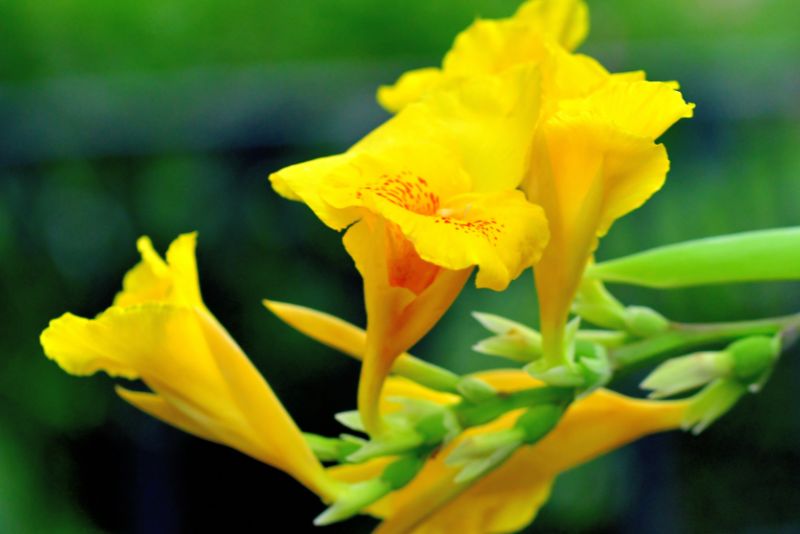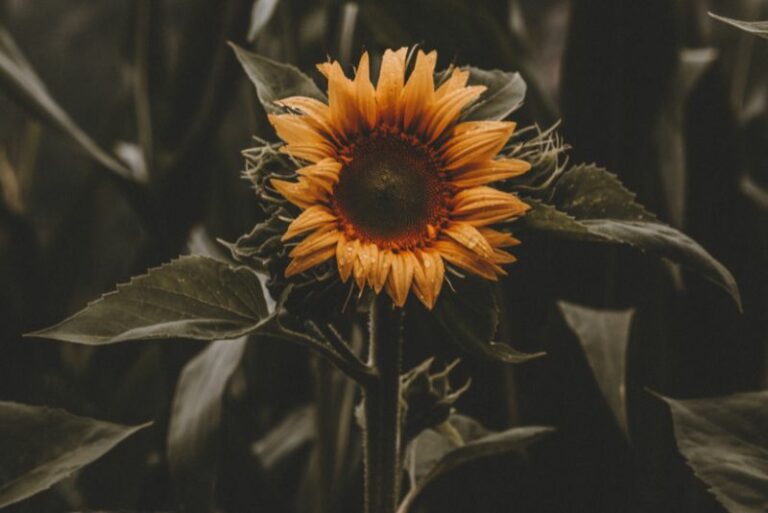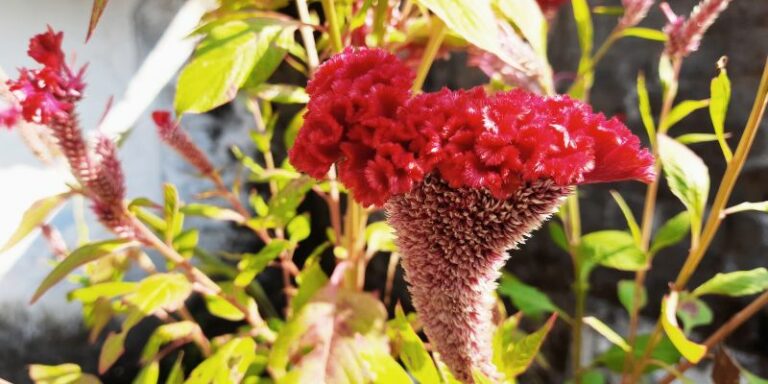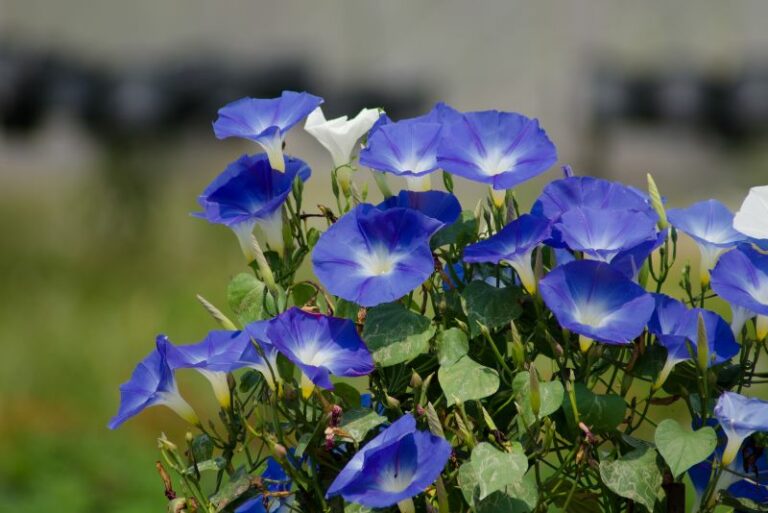Decoding the Lifespan of Canna Lilies: Annual, Biennial, or Perennial?
Canna lilies aren’t just flamboyant troves of color; they’re the stars in any garden they grace. Lush leaves, vibrant flowers, and an undeniable tropical allure make them a favorite for gardeners worldwide. Yet, a question often lingers for enthusiasts—how long do these showstoppers thrive? Do Canna lilies have a fleeting splendor, or are they the resilient perennials that keep on giving year after year?
Understanding this darling of the gardening world’s lifecycle is essential for nurturing its splendid growth. This post dives deep into the verdant world of Canna lilies, aiming to equip you with insights about their lifecycle and care that will elevate your gardening game.
Introduction to the Canna Lily

Canna lilies, often mistakenly referred to as Canna, are neither true lilies (genus Lilium) nor a species of canna (genus Canna). Originating from the sweeping vistas of the Americas, from the South to the Tropics in the north, they’ve quickened the pulse of gardeners for centuries. Their unique charm has made them an emblem of tropical and sub-tropical landscapes, even when those landscapes are merely a patch of suburban soil or a balcony planter.
While the wide canopies of banana trees might provide shade from tropical sun, it’s the Canna lilies’ bold foliage and breathtaking flowers that paint the vibrancy of the tropics into the canvas of any garden, no matter the setting.
Understanding Plant Lifecycles

Before we proceed, it’s crucial to understand the concept of plant lifecycles. Plants, broadly speaking, are categorized into three main groups based on their lifespan:
- Annuals: These plants complete their lifecycle within one growing season. They sprout from a seed, grow, produce seeds, and then die. In temperate climates, where plants with this trait die annually, they are known as “seasonal”.
- Biennials: These require two growing seasons to complete their lifecycle. They sprout and grow during the first season, then produce flowers, seeds, and subsequently die during the following season.
- Perennials: Plants in this category have a lifespan of more than two years, often blooming on a seasonal cycle within those years.
Factors influencing plant lifecycles include the climate, geography, genetics, and specific species or cultivars.
Canna Lilies Classification
Despite being called lilies, Canna plants are actually large, herbaceous perennials that belong to the family Cannaceae. Canna lilies are predominantly categorized as tender perennials, meaning that they can survive for many seasons in the right conditions but are sensitive to frost. In colder climates, they often behave as rhizomatous annuals, regrowing from the previous year’s rhizome or seed.
Canna lilies are especially intriguing because, under different conditions or in various locations, they can defy categorization. This often leaves gardeners confused about their true lifecycle. Here’s a glimpse at the general traits that determine the lifecycle of Canna lilies:
- Annual Canna Lilies: In climates where frost is common and severe, Canna lilies will not survive the winter, behaving like annuals. They will flower, produce seed, and die within a single growing season.
- Biennial Canna Lilies: Very rarely does a Canna plant live only two years (the typical definition of a biennial). If circumstances are just right, some gardeners report seeing Cannas act as biennials, though this behavior is atypical.
- Perennial Canna Lilies: In temperate climates that don’t experience harsh frost, Canna lilies can grow like true perennials, with each rhizome producing new shoots yearly.
It’s important to note that a Canna’s lifecycle is not solely determined by its genetics but by the environment provided by the gardener.
Canna Lilies’ marvelous performance is contingent on the care they receive. The key to ensuring a prominent Canna show is understanding and meeting its needs.
Care Guide for Canna Lilies
The unsung heroes of a Canna garden are meticulous care and attentive nurture. Here’s the lowdown on tending to your Canna lilies, whether they are annuals, biennials, or perennials.
Planting and Nurturing
Soil and Sunlight Requirements
Canna lilies herald from the Tropics, so they relish in rich, well-draining soil and plenty of sunlight. Aim for a fertile mix of loam, compost, and sand to give them the perfect start. If your soil is heavy and clumpy, add a bit more sand to aid drainage. Canna lilies are fond of the sun, so a full or partial sun position is ideal.
Also Read: Optimal Light Conditions for Canna Lilies: Sunlight Needs Demystified
Watering Needs
Canna lilies are thirsty plants. Keep the soil consistently moist but never waterlogged. In hot and sunny weather, they may need daily watering to sustain their tropical thirst.
Yearly Care by Lifecycle
Annual Canna Lilies
For annual Canna lilies, the emphasis is on growth and reproduction, as they have only one shot at completing their lifecycle in a single year. Ensure they have sufficient nutrients from soil or fertilizers to support blooming. It is also important to keep the plant watered to maintain optimal growth and prevent stress.
Perennial Canna Lilies
Perennial Canna lilies require a more strategic approach to their care. During the growing season, feed them monthly with a balanced fertilizer. In cold climates, cut them back after the first frost, dig up the rhizomes, and store them in a cool, dark place. Replant in the spring once all danger of frost has passed.
Biennial Canna Lilies
Biennial Canna lilies—if you’re in the select few regions that allow them to behave as biennials—have somewhat less prescriptive care between the two growing seasons. The goal is to sustain the rhizome health for a healthy return the next year, which includes appropriate water management and supporting its seasonal cycles.
Comparative Analysis
The choice between annual, biennial, or perennial Canna lilies is not a straightforward one. Here’s a comparative analysis to aid in your decision-making process:
Advantages and Disadvantages
Annual Canna Lilies
Pros include a straightforward and showy growth, with a focus on large, vibrant blooms. However, the need to replant each year can be seen as a downside for those seeking low-maintenance gardening.
Perennial Canna Lilies
The lasting beauty of a perennial Canna garden is a major plus. Additionally, mature rhizomes often result in more substantial and more frequent blooming. The con here is the extra work involved in overwintering the rhizomes in colder climates.
Biennial Canna Lilies
Given that few gardeners experience Cannas as biennials, it’s difficult to argue for or against their characteristics in this lifecycle.
Choosing the Right Type
Selecting the right Canna lifecycle type depends on your gardening ambitions and local conditions. Those looking for a low-effort garden might prefer annuals, while gardening aficionados who relish the process might opt for the challenge of growing biennials or the perennial promise.
Frequently Asked Questions
Here are some of the most common queries about the lifecycle of Canna lilies:
Question 1: Are there any shortcuts to encourage my annual Canna lilies to survive longer?
There are no shortcuts when it comes to the lifecycle of annual Canna lilies. They are genetically programmed to complete their growth cycle, and while certain conditions might prolong their life slightly, it’s unlikely to change the outcome drastically.
Question 2: Can I change an annual Canna lily to a perennial through exceptional care?
Transforming an annual Canna lily into a perennial is improbable. However, you might be able to sustain the rhizome for an extended time, providing limited seasonal regrowth in a second year, effectively acting like a biennial under these carefully curated circumstances.
Question 3: What’s the most significant weather-related factor that affects the lifecycle of Canna lilies?
Frost is the most significant weather-related factor impacting the lifecycle of Canna lilies. It determines whether the plant will survive beyond its growing season, making it an annual or perennial in a gardener’s eyes.
Question 4: What should I do if I want my perennial Canna lilies to spread and thrive even more?
To encourage perennial Canna lilies to flourish and spread, generously feed your plants, provide ample space, and ensure that they get the right amount of sunlight. Regular, vigilant watering and proper overwintering practices in colder climates will contribute to the growth of strong rhizomes ready to produce offspring.
Conclusion
The lifecycle of Canna lilies is a symphony conducted by nature and nurtured by the gardener. Regardless of whether they bloom for a single season, two, or indefinitely, one thing is certain—Canna lilies are a treasure in any garden. Through this understanding, we hope you’ll be inspired to experiment, create, and celebrate the unparalleled beauty of these remarkable plants in your own green corner of the world.






